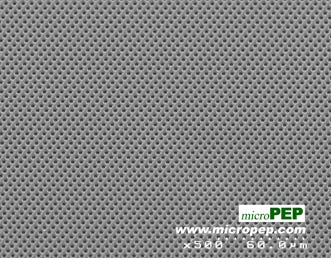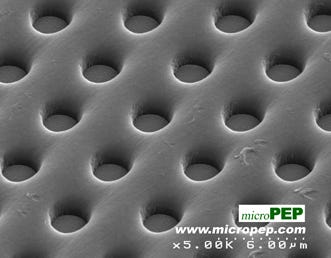COC unlocks nanoscale replication potential
Micromolding processor microPEP (East Providence RI) has driven the technology closer to near-nanoscale replication by successfully injection molding a Microwell Array from Topas cyclic olefin copolymer (COC) supplied by Topas Advanced Polymers (Florence, KY). MicroPEP is a wholly owned subsidiary of Precision Engineered Products (Attleboro, MA).
August 31, 2009
Micromolding processor microPEP (East Providence RI) has driven the technology closer to near-nanoscale replication by successfully injection molding a Microwell Array from Topas cyclic olefin copolymer (COC) supplied by Topas Advanced Polymers (Florence, KY). MicroPEP is a wholly owned subsidiary of Precision Engineered Products (Attleboro, MA).
|
|
The details reproduced in microPEP’s Microwell Array measure 3 µm diameter by 3 µm depth, with a pitch of 6.5 µm. These features appear on a standard microscope slide (25 mm x 75 mm x 1 mm thick). Such arrays are used in a variety of genomics, life science, and biomedical assay applications that utilize microspheres or beads. Prior to the arrival of microPEP’s thermoplastic Microwell Array, the industry relied primarily on etched silicon or glass parts.
Topas COC was chosen for its excellent flow and surface replication characteristics, as well as its purity, biocompatibility, high moisture barrier, and resistance to damage by many of the chemicals used in biomedical assays. Moreover, Topas says its resin is an attractive choice for analytical applications owing to its extraordinary transparency, especially in the near-UV range (250-300 nm) where many tests are conducted, and to its inherently low autofluorescence. Read about the details on the challenges associated with molding this part. —[email protected]
About the Author(s)
You May Also Like




